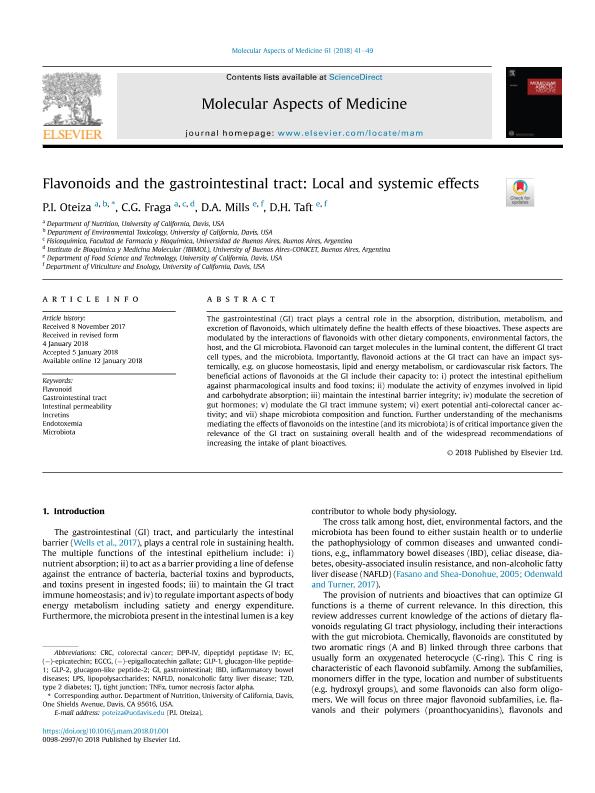Artículo
Flavonoids and the gastrointestinal tract: Local and systemic effects
Fecha de publicación:
06/2018
Editorial:
Elsevier Science
Revista:
Molecular Aspects Of Medicine
ISSN:
0098-2997
Idioma:
Inglés
Tipo de recurso:
Artículo publicado
Clasificación temática:
Resumen
The gastrointestinal (GI) tract plays a central role in the absorption, distribution, metabolism, and excretion of flavonoids, which ultimately define the health effects of these bioactives. These aspects are modulated by the interactions of flavonoids with other dietary components, environmental factors, the host, and the GI microbiota. Flavonoid can target molecules in the luminal content, the different GI tract cell types, and the microbiota. Importantly, flavonoid actions at the GI tract can have an impact systemically, e.g. on glucose homeostasis, lipid and energy metabolism, or cardiovascular risk factors. The beneficial actions of flavonoids at the GI include their capacity to: i) protect the intestinal epithelium against pharmacological insults and food toxins; ii) modulate the activity of enzymes involved in lipid and carbohydrate absorption; iii) maintain the intestinal barrier integrity; iv) modulate the secretion of gut hormones; v) modulate the GI tract immune system; vi) exert potential anti-colorectal cancer activity; and vii) shape microbiota composition and function. Further understanding of the mechanisms mediating the effects of flavonoids on the intestine (and its microbiota) is of critical importance given the relevance of the GI tract on sustaining overall health and of the widespread recommendations of increasing the intake of plant bioactives.
Archivos asociados
Licencia
Identificadores
Colecciones
Articulos(IBIMOL)
Articulos de INSTITUTO DE BIOQUIMICA Y MEDICINA MOLECULAR
Articulos de INSTITUTO DE BIOQUIMICA Y MEDICINA MOLECULAR
Citación
Oteiza, P. I.; Fraga, César Guillermo; Mills, D. A.; Taft, D. H.; Flavonoids and the gastrointestinal tract: Local and systemic effects; Elsevier Science; Molecular Aspects Of Medicine; 61; 6-2018; 41-49
Compartir
Altmétricas




